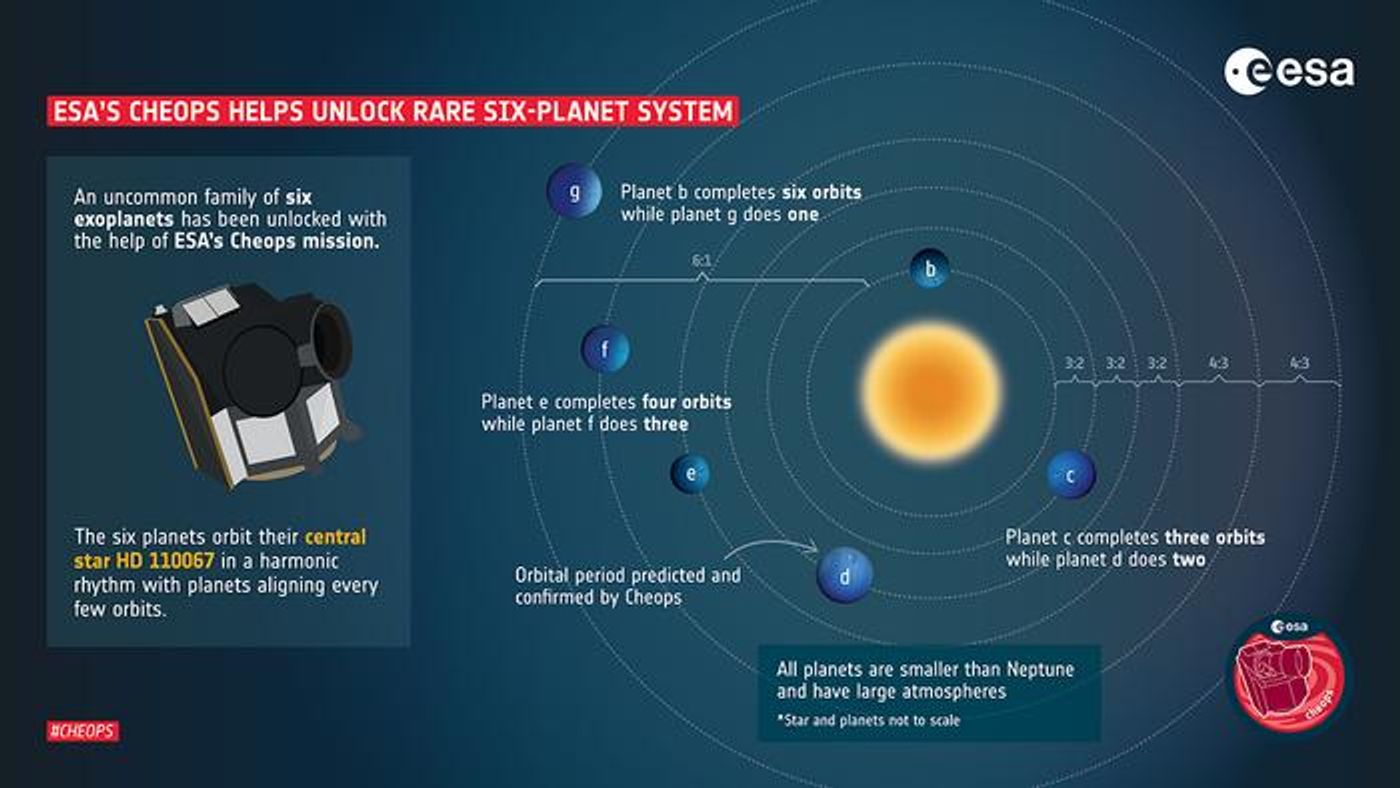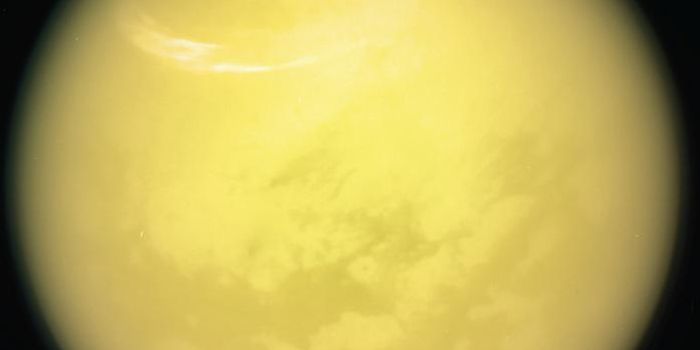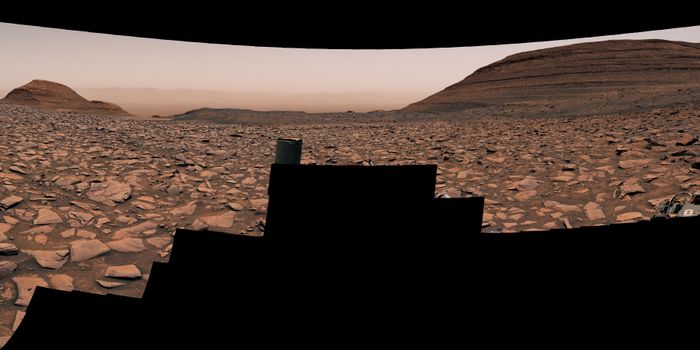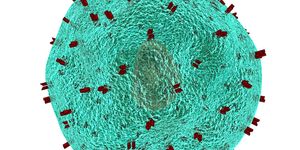Musical Planets: Unraveling the Orbital Waltz of HD110067
A recent study published in Nature discusses the confirmation of an exoplanetary system based on data collected in 2020. The system, known as HD 110067, possesses six planets whose orbits are in resonance with each other, or “in sync”, meaning which could offer profound insights into the formation and evolution of planetary systems throughout the cosmos. All the planets exhibit sizes between Earth and Neptune, also known as sub-Neptunes, and was conducted by an international team of researchers using data from NASA’s Transiting Exoplanet Survey Satellite (TESS) and the European Space Agency’s CHaracterising ExOPlanet Satellite (Cheops).
Artist illustration of the planets within the HD 110067 system exhibiting orbital resonances with the colored lines depicting their resonances with each other. (Credit: CC BY-NC-SA, Thibaut Roger/NCCR PlanetS)
“This discovery is going to become a benchmark system to study how sub-Neptunes, the most common type of planets outside of the solar system, form, evolve, what are they made of, and if they possess the right conditions to support the existence of liquid water in their surfaces,” said Dr. Rafael Luque, who is a Postdoctoral Scholar in the Department of Astronomy and Astrophysics at the University of Chicago and lead author of the study.
After gathering the original dataset from TESS in 2020, the team combined this with data from Cheops to confirm the unique resonance configuration that HD 110067 exhibits. For example, the innermost planet conducts three orbits while the second innermost planet conducts two, which is known as a 3:2 resonance, which the four innermost planets repeat. Similarly, the outer three planets experience a 4:3 resonance repeats twice. Additionally, the team hypothesizes that these planets have exhibited these same resonances since they first formed billions of years ago.
Graphic depicting the orbital resonances of the planets with HD 110067 using data obtained from the European Space Agency's Cheops mission. (Credit: European Space Agency)
Orbital resonances are observed in only one instance in our own solar system with three of Jupiter’s Galilean Moons, Io, Europa, and Ganymede. In this case, they are in a 4:2:1 resonance, meaning for every four orbits of Io, there are two orbits of Europa, and one orbit of Ganymede. As for exoplanetary systems, HD 110067 is extremely rare.
“We think only about one percent of all systems stay in resonance, and even fewer show a chain of planets in such configuration,” said Dr. Luque, noting that HD110067 is unique and opens the doors for future studies: “It shows us the pristine configuration of a planetary system that has survived untouched.”
How many more exoplanetary systems in resonance will astronomers discover in the coming years and decades? Only time will tell, and this is why we science!
As always, keep doing science & keep looking up!
Sources: Nature, EurekAlert!, Wikipedia, NASA, European Space Agency, EurekAlert! (1), Wikipedia (1)










